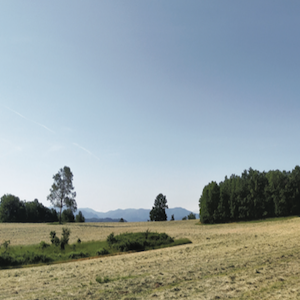Ecology and distribution of the European Roller Coracias garrulus in a recently recolonized area of Northern Italy

All claims expressed in this article are solely those of the authors and do not necessarily represent those of their affiliated organizations, or those of the publisher, the editors and the reviewers. Any product that may be evaluated in this article or claim that may be made by its manufacturer is not guaranteed or endorsed by the publisher.
Accepted: 25 May 2023
Authors
This study reports the first data on the ecology and distribution patterns of a population of Eurasian Roller Coracias garrulus breeding in the province of Alessandria in northwestern Italy. The research was conducted between 2017 and 2021. 13 pairs were found, 12 of which were confirmed to be breeding. The species primarily chose to nest in natural cavities in White poplar Populus alba, with nesting observed to a lesser extent in Black poplar Populus nigra, Turkey Oak Quercus cerris and in one case sandy river banks. The home range of each pair is mostly within pluriannual stable meadows and arable crops; on average it extends over 0,92 km2 with values that seems to oscillate according to the degree of fragmentation and isolation of patches of stable meadows: this can be explained by the lower availability of arthropods (consisting mostly of Orthoptera) found in mosaics of alternating meadows interspersed with annual crops. In such conditions, a low density of pairs was observed, along with an increase in territorial boundaries and greater distance between the nests. In the sectors characterised by large, multi-annual stable meadows, with more diverse and abundant entomofauna, supporting a higher number of breeding pairs, a significant contraction of home ranges is observed, with an increased concentration of nesting sites, and higher intraspecific tolerance. Between 2019 and 2021 a total of 17 artificial nest boxes were installed, 3 of which have been successfully occupied. Given the continuous anthropogenic transformation these territories are regularly facing, sometimes subtracting potential nesting or feeding sites due to crop rotation, coppicing, ex-novo construction of ground solar panel systems on agricultural land, etc., in order to protect and conserve this population of European Roller, it is desirable to put in place a greater number of artificial nest structures together with monitoring aimed at protecting the biodiversity of the territory.
How to Cite

This work is licensed under a Creative Commons Attribution-NonCommercial 4.0 International License.







